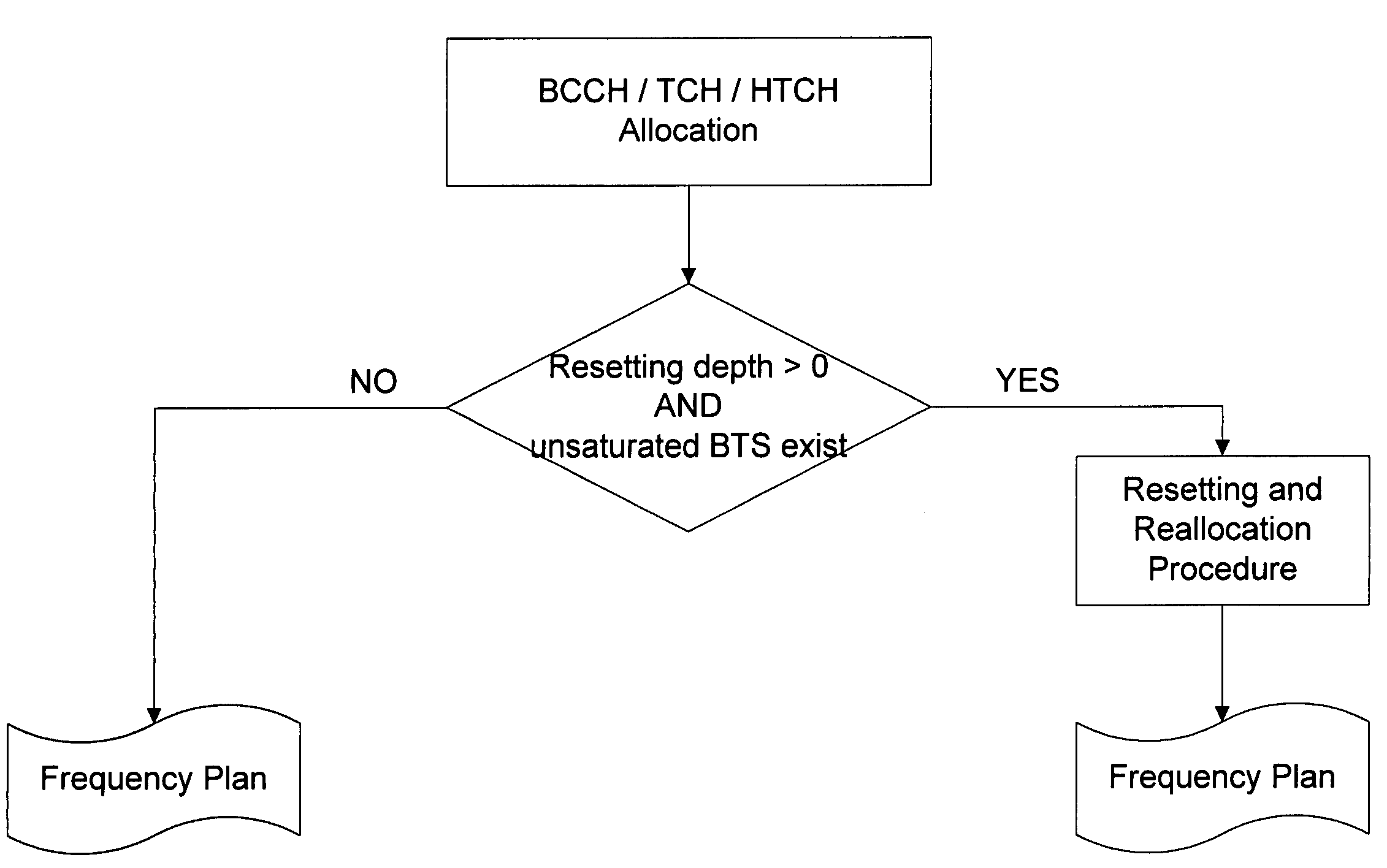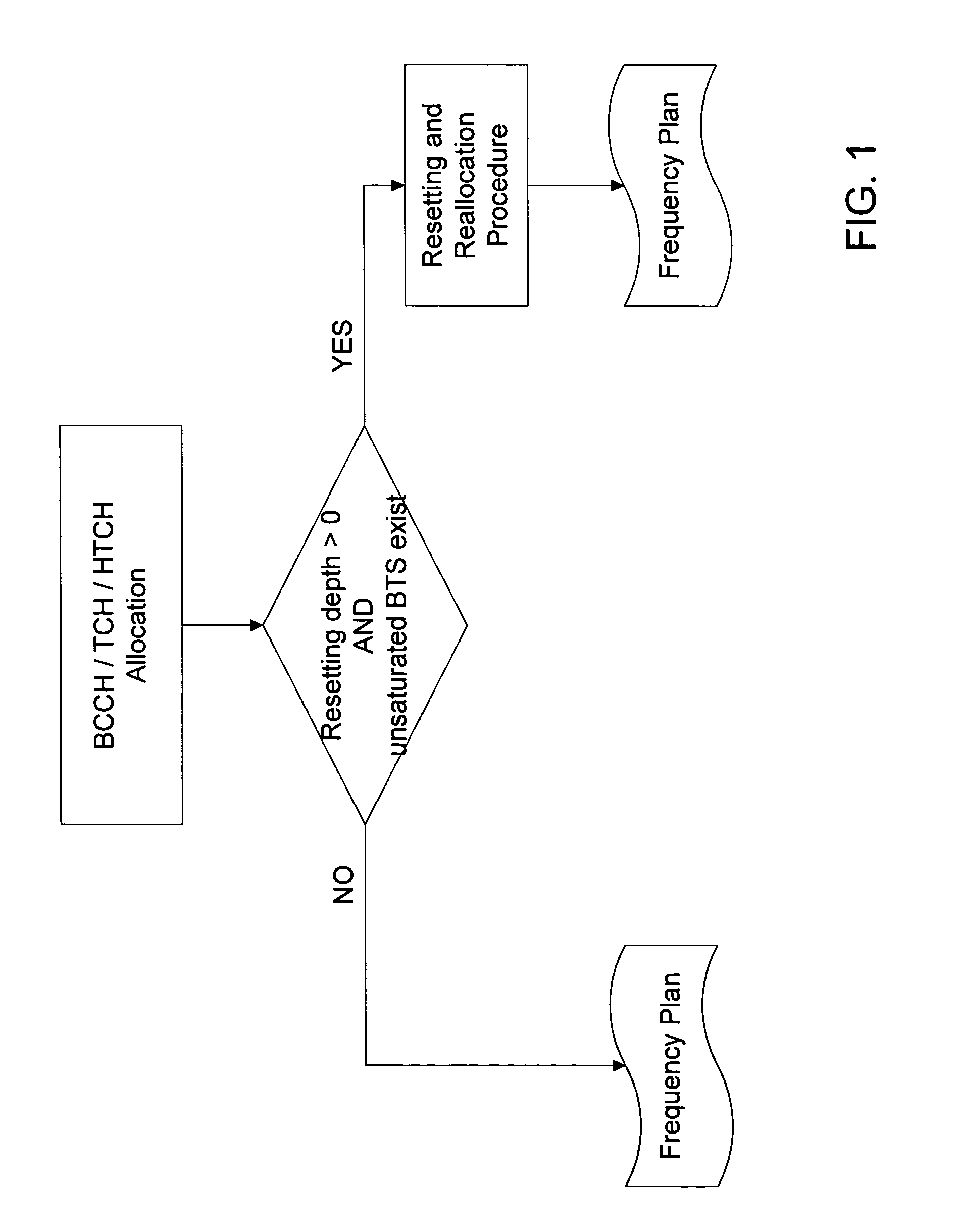Method for assigning frequencies to base stations of a mobile telephone network
a mobile telephone network and frequency allocation technology, applied in network planning, network traffic/resource management, transmission, etc., to achieve the effect of simplifying the tasks
- Summary
- Abstract
- Description
- Claims
- Application Information
AI Technical Summary
Benefits of technology
Problems solved by technology
Method used
Image
Examples
Embodiment Construction
[0018]Frequency allocation is directed to allocation of frequencies to base stations (BS). The allocation must satisfy certain boundary conditions which essentially reduce interference in a mobile telephone network.
[0019]A BS typically requires more than one frequency.
[0020]The frequencies required at a base stations are initially assigned a priority. The frequencies are allocated to the base stations in the order of their priority. Frequencies with the highest priority are allocated to important control channels (e.g., BCCH: Broadcast Control Channel). Thereafter, the frequencies with a second priority for the traffic channels (TCH: Traffic Channel) and frequencies with a third priority for other channels (e.g., HTCH) are allocated.
[0021]Example: a base station requires four frequencies. A prioritization can look as follows: the base station requires one frequency of the Priority 1, one frequency of the Priority 2 and two frequencies of the Priority 3.
[0022]In this case, first a fr...
PUM
 Login to View More
Login to View More Abstract
Description
Claims
Application Information
 Login to View More
Login to View More - R&D
- Intellectual Property
- Life Sciences
- Materials
- Tech Scout
- Unparalleled Data Quality
- Higher Quality Content
- 60% Fewer Hallucinations
Browse by: Latest US Patents, China's latest patents, Technical Efficacy Thesaurus, Application Domain, Technology Topic, Popular Technical Reports.
© 2025 PatSnap. All rights reserved.Legal|Privacy policy|Modern Slavery Act Transparency Statement|Sitemap|About US| Contact US: help@patsnap.com



